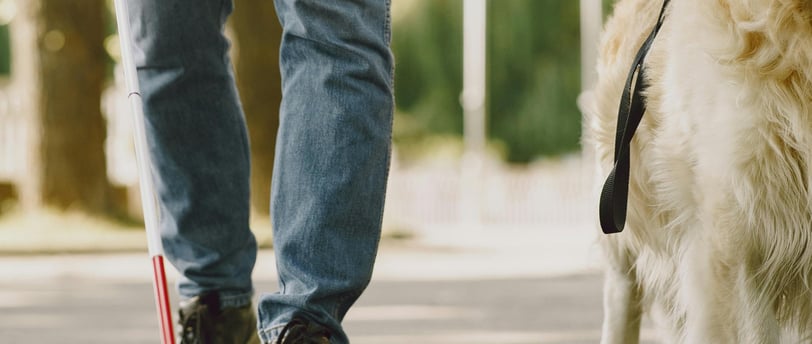Service Dog Misconceptions: What You Should Know
Explore common service dog misconceptions and myths that the public believes. Learn the essential facts about service dogs to better understand their important role in assisting individuals with disabilities.
LITTLE LESSONS
1/18/20253 min read


Let’s Set the Record Straight!
Misconceptions are bound to happen in a world as underrepresented as ours, but here’s the good news: we have the chance to change that! By spreading awareness and sharing our experiences, we can help the public better understand what service dogs are really all about.
If you’re a handler, I’m sure you’ve heard your fair share of wild assumptions about you and your service dog. Let’s tackle some of the most common ones and set the record straight!
1. "Aren’t All Service Dogs the Same?"
Not at all! Just like people, every service dog is unique in their own way. From their personality to the tasks they perform and the needs they meet, no two service dogs are exactly alike. This individuality is what makes them so special and perfectly suited to their handlers.
2. "Service Dogs Are Always Working"
Nope! Just like us, service dogs need time to rest and recharge. They enjoy plenty of downtime to relax, play, and simply be dogs. A well-rested pup is not only happier but also more focused and ready to help when needed—no burnout here!
3. "It’s Okay to Pet Them If I Ask"
Not always. Some handlers allow their service dogs to be petted while they’re working, but others rely on their dogs to stay laser-focused on their tasks—it’s a matter of safety for the handler. Never assume it’s okay to pet a service dog. Always ask first, and if the answer is no, respect it!
4. "You Can Tell a Service Dog by Its Vest"
Actually, vests aren’t required! Many handlers choose to use one because it can make navigating public spaces easier, but a service dog doesn’t need a vest to do their job. Some dogs, like guide or mobility assistance dogs, may wear specialized harnesses, while others, such as medical alert dogs, might not need any visible gear at all. The best rule of thumb? Don’t approach a dog unless you’re invited—it’s always better to be safe and respectful.
5. "Real Service Dogs Never React to Anything"
Not true! While service dogs are incredibly well-trained, they’re still dogs—not robots. They might react to new situations, and that’s completely normal! Handlers work closely with their dogs to help them adapt, stay focused, and remain calm in unfamiliar environments. It’s all part of the teamwork that makes the bond so strong.
6. "They’re Just Fancy Pets"
This couldn’t be further from the truth. While service dogs are legally recognized as medical equipment, they’re so much more than that. They’re trusted partners who provide safety, independence, and unwavering support to their handlers.
7. "It Can't be That Hard to Train One"
Not quite! Training a service dog is a long and challenging process that can take years, and even then, not every dog is suited for the job. It requires patience, consistency, and dedication. Once a dog is fully trained, the work doesn’t stop there—handlers continue to reinforce skills, adapt to changing health needs, and ensure their dogs stay engaged and happy. It’s a journey, but one that builds an incredible bond and partnership.
Final Thoughts
Clearing up misconceptions about service dogs helps create a more supportive and inclusive world for handlers and their incredible canine partners. The more people understand, the less stigma and discrimination we face, allowing us to live our lives to the fullest. After all, isn’t that what we all deserve?
Have you come across any other misconceptions about service dogs? Share them in the comments—we’d love to hear your thoughts and experiences!
photo credit: Gustavo Fring on pexels
